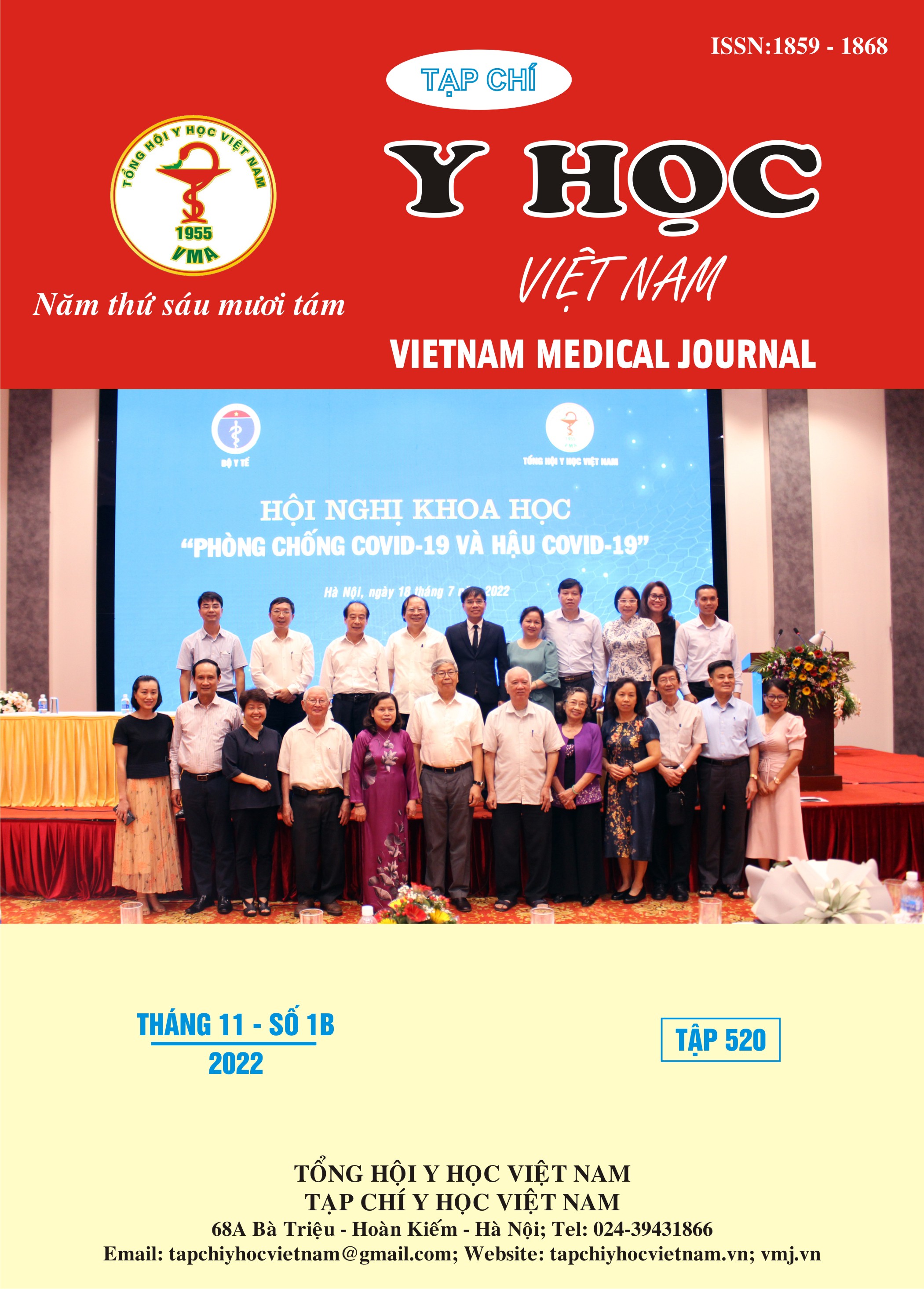FACTORS ASSOCCIATED WITH INFECTION IN CATHETERIZED PATIENTS AT THONG NHAT HOSPITAL
Main Article Content
Abstract
Introduction: Catheter placement is gradually becoming popular in inpatients. However, the use of catheters may increase the risks of infection. Objectives: To determine the factors associated with infection in catheterized patients at Thong Nhat hospital. Materials and methods: A descriptive cross-sectional study was conducted in medical records of inpatients aged 18 years or older, implanted with at least one intravascular catheter from January 2018 to December 2021 at Thong Nhat hospital. The data collected including age, gender, comorbidities, site of insertion, number of catheters, length of stay, infections. Multivariate logistic regression was used to identify factors associated with infection. Results: Three hundreds and ninety three catheters were inserted into 308 patients, of which 44.8% of patients had at least one infection, 10.7% had catheter-related infection. Age (OR = 1.030; CI 95%: 1.012-1.048; p=0.001), diabetes (OR = 1.746; CI 95%: 1.014-3.008; p = 0.045), and the subclavian vein catheter (OR= 2.955; CI 95%: 1.085-8.047; p=0.034) were the factors associated with higher incidence of infection. Treating at Nephrology department (OR = 0.327; CI 95%: 0.177-0.605; p < 0.001) was protective factor. Conclusions: It is need to adhere to infection control methods in catheterized patients , especially elderly, diabetics and patients with subclavian vein catheter, to minimize the risk of infection.
Article Details
References
2. Kaur S., Heard SO. (2001), “Catheter-Related infection”. Surgical Intensive Care Medicine, 2nd ed, Springer Science+Business Media, LLC; 435-449.
3. Lorente L., Henry C., Martín M. M., Jiménez A., & Mora M. L. (2005), “Central venous catheter-related infection in a prospective and observational study of 2,595 catheters”, Critical care, 9 (6), R631–R635.
4. Saliba P., Hornero A., Cuervo G., et al (2018), “Mortality risk factors among non-ICU patients with nosocomial vascular catheter-related bloodstream infections: a prospective cohort study”, The Journal of hospital infection, 99 (1), 48-54.
5. Dalrymple LS., , Mu Y,, Nguyen DV, et al (2015), “Risk Factors for Infection-Related Hospitalization in In-Center Hemodialysis” Clinical Journal of the American Society of Nephrology, 10 (12), 2170-2180
6. Schwanke A. A., Danski M., Pontes, L., Kusma, S. Z., & Lind, J. (2018), “Central venous catheter for hemodialysis: incidence of infection and risk factors”, Revista brasileira de enfermagem, 71 (3), 1115–1121.
7. Sahli F., Feidjel R., & Laalaoui R. (2017), “Hemodialysis catheter-related infection: rates, risk factors and pathogens”, Journal of infection and public health, 10 (4), 403–408.
8. Martin K., Lorenzo YSP., Leung PYM., et al. (2020), “Clinical Outcomes and Risk Factors for Tunneled Hemodialysis Catheter-Related Bloodstream Infections”, Open Forum Infect Dis, 7 (6), ofaa117.


